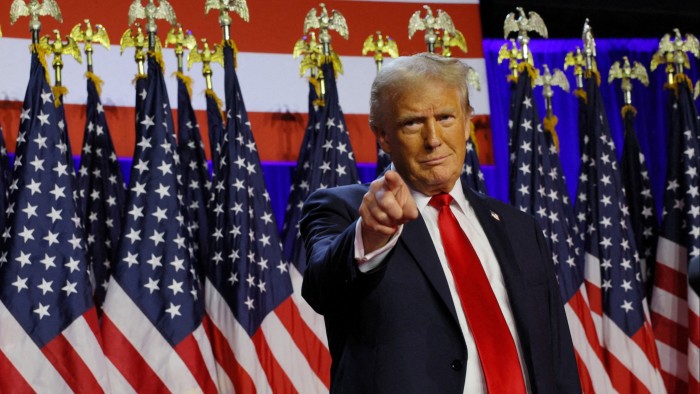Unlock the Editor’s Digest for free
Roula Khalaf, Editor of the FT, selects her favourite stories in this weekly newsletter.
The writer is president of Queens’ College, Cambridge, and an adviser to Allianz and Gramercy
The global economy in 2025 is shaping up to be anything but ordinary. Already shaky confidence in an outlook of solid growth and lower inflation has given way to anticipation of a notably wide range of potential outcomes.
The question is not whether the US will continue to outperform most other countries. It will. It is more about the levels of divergence in growth and inflation and the degrees of disruptions in the global economic and financial architecture. The implications extend well beyond short-term economic wellbeing.
We are currently seeing a rather unusual combination of US economic exceptionalism and deeper cracks in the western-dominated global architecture that has served the US well. It is an unstable mix that, derailed by its growing internal contradictions, will lead to much greater global fragmentation in trade, technology and payments systems, together with slower growth and higher inflation in the US and elsewhere.
Alternatively, if timely policy actions are taken, the world could stabilise in a form of “globalisation lite” negotiated between countries rather than fragmentation. This could enable growth to develop deeper roots, anchor price stability, and counter systemic malfunctions.
Already, the global economy enters 2025 with considerable growth and financial market divergences. Last month, the IMF improved its 2024 growth rate for the US to 2.8 per cent, a level that is likely to be upped again. In the Eurozone, growth languishes at just 0.8 per cent and in the emerging world, economies are slowing with China struggling to deliver its already lowered forecast of 4.8 per cent. Even India, the star performer, may see its 7 per cent projected growth at risk. Meanwhile, the S&P 500 index has gained 27 per cent year-to date, significantly outperforming markets in Europe, China and India.
There is little on the policy front to suggest a change in this international picture. French and German economic policymaking is hindered by considerable political uncertainty. Amid some concerns that China is facing a deepening Japanification of its economy, Beijing is struggling to reconcile the reorientation of its growth strategy with short-term pressures for old-style stimulus measures.
At the same time, the “last mile” of work by major central banks to achieve low and stable inflation is proving tricky, undermined by hesitancy to pivot decisively from their overreactive mode of excessive data dependence to set policy. The lack of a strategic, forward-looking approach has led the Federal Reserve, in particular, to a series of signalling flip-flops that fuel bond market volatility. With the absence of credible forward policy guidance, there is now a growing debate on whether the Fed should continue to cut rates, skip, or pause in December — let alone what comes after that.
All of this is before the changes coming with the new US administration. They are particularly complex for investors to analyse as potential shifts in US trade, migration, and fiscal policies interact with a range of responses in corporate pricing, demand and supply elasticities, game theory, and statecraft.
There is also a question of how economic pressure will spur secular changes — in particular the international reserve diversification away from the dollar and growing interest in alternative, non-dollar payment systems. This is at the source of Trump’s weekend warning to Brics economies on the dollar. “We require a commitment from these Countries that they will neither create a new BRICS Currency, nor back any other Currency to replace the mighty U.S. Dollar or, they will face 100% Tariffs, and should expect to say goodbye to selling into the wonderful U.S. Economy,” Trump wrote.
The questions over such an uncertain outlook can only be comfortably answered if you have confidence in policymakers’ ability to understand these unusual dynamics and adjust accordingly including through reasonable pre-emptive negotiations with the incoming US Administration consistent with longer-term alignments and shared interests. This is feasible for most countries with the notable exception of China.
The longer they delay, the greater the obstacles to existing drivers of growth and financial stability, and the harder it will be to unleash exciting engines of future prosperity such as breakthroughs in artificial intelligence and life sciences. Political leadership, policy agility and reasonable compromises can create a pathway to a brighter medium-term outlook.
Read the full article here

